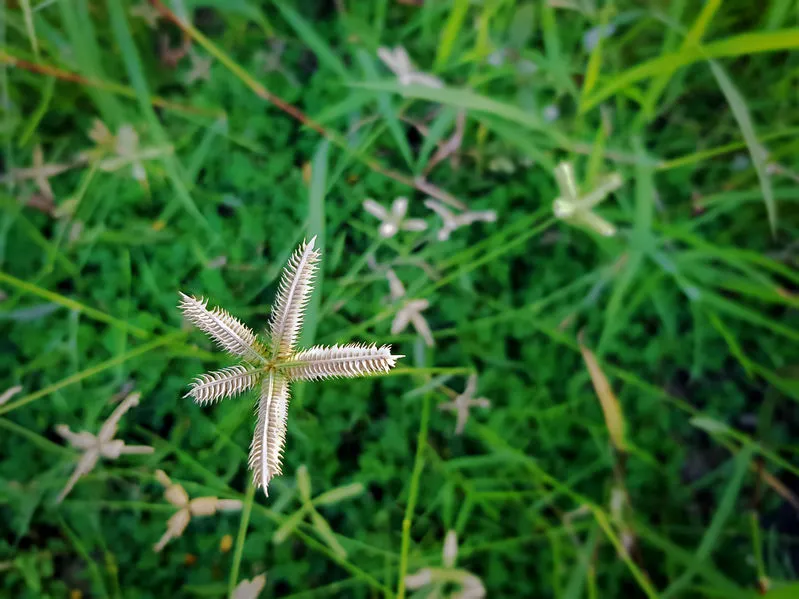You may be wondering, what is the best time for pre-emergent weed control? Or, if you aren’t familiar with the various herbicidal products available, you may also be wondering what pre-emergent even means.
The term “pre” means before. Thus, pre-emergent weed control is a preventative treatment, so you want to apply this before the weeds grow. In North Texas it is most common for weeds to grow in the Spring and Fall.
You can apply pre-emergent treatments throughout the year to stay a step ahead of weed growth. However, the best use of your money and the product itself is using the pre-emergent in early spring and early fall.
Both spring and fall have a variety of different weed species that appear. That means it’s best to know the weed type that you are trying to prevent, so that you use the most effective product.
SPRING PRE-EMERGENTS
You want to use spring pre-emergent herbicide application to prevent the annual weeds that appear in the summer. These include both broadleaf and grassy weeds.
The best results are achieved by applying herbicides when the soil temperature is around 50-55 degrees or above, over the space of 3 to 4 days.
If you’d rather leave it to the pros so you don’t have to keep up with all the details, visit our Fertilization and Weed Control service page to find out how we can help!
Another tool to measure your timing is to aim for about a month after the season’s final freeze. For spring time, this typically means mid-March in the North Texas area.
RELATED TIP: When to Apply Weed Control to Lawn
Most pre-emergents remain active for around 100 days. For this reason, you will want to apply a second treatment about 3 months after the initial application.
At that time of year, the ground temperature will be ideal, and you’ll be able to knock out the weeds before their seeds begin to germinate. However, keep in mind that products designed to kill grassy weeds will also hamper the growth of healthy turfgrass.
The best formulations of pre-emergent are liquid and granule formulas. These have been proven to be the most effective preventative herbicides.
You want to make sure you use water when using granular pre-emergent. Water the area well to activate the chemicals and ensure that they soak deep into the ground.
With liquid pre-emergent, you want to water even more thoroughly. This is because grass and other plants can absorb the active ingredients before they get a chance to soak into the soil.
FALL PRE-EMERGENTS
When it comes to fall pre-emergent products, they are designed to prevent winter weeds from appearing. Winter weeds germinate during the fall and begin to grow in the colder months.
However, similar to spring applicators, the timing is important to prevent yearly weeds from taking control of your lawn. The best time to apply fall pre-emergent herbicides is normally late summer to the early fall, depending on your local climate.
Normally, fall weeds start to germinate when the temperature drops below 70 degrees. It’s best to apply a pre-emergent when the temperature in the daytime is above 70 degrees, over the period of 5 to 6 days.
RELATED TIP: Is Pre-Emergent Safe for Dogs?
During the winter months, bluegrass, also known as Poa Annua, is one of the most common weeds to grow. It’s a hardy weed that you may have to attack multiple times in order to gain a regular level of control.
With this weed, as well as other grassy weeds, it is important to apply a pre-emergent treatment only in areas where there is no healthy turfgrass. Such areas may include open spaces in a flower bed, or the bare ground beneath a hedge of shrubs.
FINAL THOUGHTS
When it comes to using a pre-emergent herbicide in your lawn, the key is to stay a step ahead of the weed seeds that may be germinating in the soil. Be sure you use the products as directed on their labels, and wear protective gloves to avoid direct contact with abrasive chemicals.



Comments (0)
Thanks for your comment!
Thanks for your feedback! Your comments have been successfully submitted! Please note, all comments require admin approval prior to display.
Error submitting comment!
There is a problem with your comment, please see below and try again.